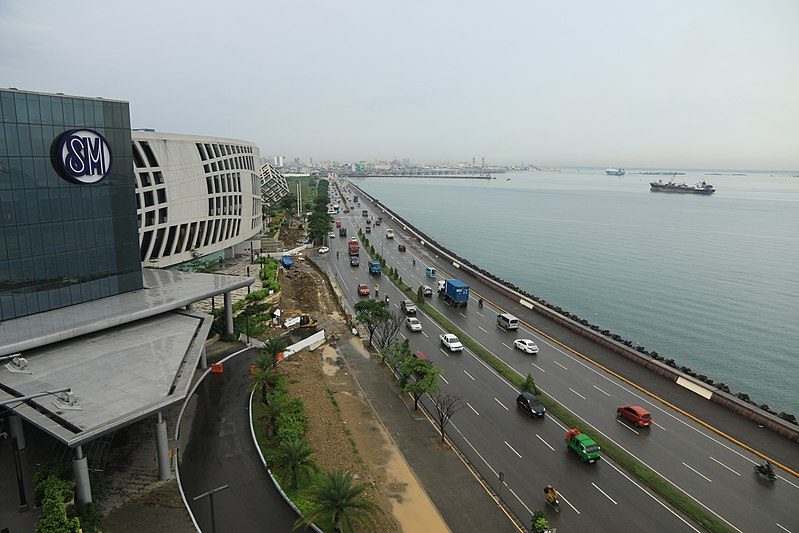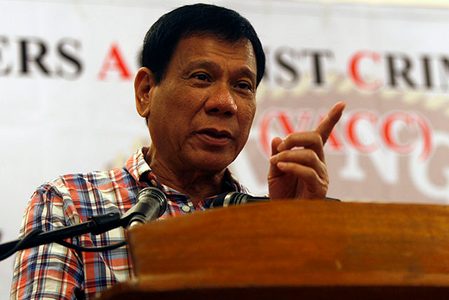SUMMARY
This is AI generated summarization, which may have errors. For context, always refer to the full article.

This city has been praised for its effective response to COVID-19 this year, but this cost taxpayers. Just how much? About P3.5 billion, according to the Cebu City government.
The local government projected it needs another P2.9 billion to fund its COVID-19 response in 2021.
Indeed, while other local government units across the country are cash-strapped and anticipate lower revenues due to the pandemic, Cebu City has a secret weapon: The South Road Properties (SRP) project. (READ: 2021 for LGUs: Cash-strapped in the middle of a pandemic)
But on Wednesday, December 23, after intense debates and questions from Vice Mayor Michael Rama, the council voted to reduce the amount it could get from the SRP funds from P3 billion to P2.1 billion. (READ: Averting disaster: How Cebu City flattened its curve)
The project in particular they would get the funds from is the city’s 45-hectare prime real estate lot that was sold to the SM-Ayala consortium in 2015 for about P17 billion.
A pet project of former mayor Tomas Osmeña, the SRP is a 300-hectare reclaimed area that will be a mixed-use business and residential district once development is completed. The SRP is one of the city’s 3 main business districts aside from the IT Park in Barangay Lahug and the Cebu Business Park in Barangay Luz.
The other two business districts are in the city’s northern part, while the SRP is the only one in the southern part and includes a highway that connects southern cities and towns with the province’s capital.
The project is also the landing point of the third Mactan Bridge – or the Cebu Cordova Link Expressway – which will be the first bridge to connect Cebu City and the province’s southern towns to Mactan Island, where the international airport is located.
The SM-Ayala project, which is next to – but separate from – the SM Seaside mall, broke ground only in January 2020 and is expected to complete development by 2035.
Mayor Edgardo Labella has said he expected it to generate P316 billion in investments.
The development plans include a 16,000-capacity convention center and a one-hectare park. Labella said that over time the project would contribute P22 billion to the city’s revenues through permits, taxes, and other regulatory fees.
Unpaid loans, unliquidated funds?
So why are city officials not completely sold on the idea to rely on the SRP money alone to fund the local government’s response to COVID-19 in 2021?
First, there’s the issue of fiscal management. Second, the SRP continues to divide politicians here. Third, some councilors are accusing the city government of failing to account for the P3.5 billion it claimed to have spent to address the pandemic this year.
Vice Mayor Rama said the council reduced the usage of SRP proceeds to P2.1 billion because the city is still paying a P4-billion loan from the Japanese government for the construction of the entire reclamation project.
While the current administration had hoped to pay the loan early, the pandemic and the economic crisis that resulted from it made them stretch the payments up to 2025.
Rama said during his privilege speech on Wednesday, prior to the vote on the budget, that the city could still fund the rest of the pandemic-related health projects for 2021 but not from the SRP bucket.
Below market value
There is another reason why the SRP is such a contentious issue.
The project is the subject of a case by Osmeña against the Cebu City government, SM Prime and the Ayala Corporation, filed in 2019 and pending at the Cebu City Regional Trial Court. Osmeña and Rama were allies from 2001 to 2010 (serving as mayor and vice mayor, respectively), but Osmeña later accused Rama of selling the project for far below market value.
Based on the contract price, the property was sold for an estimated P38,000 per square meter in 2015. Osmeña estimated the property to be worth at least P100,000 per square meter at the time.
Osmeña and his allies see the project as something that should be carefully managed for the long-term benefit of Cebu.
Those allied with Mayor Labella, on the other hand, tend to see it as a quick way to source revenue for the city, especially in the aftermath of the pandemic.
If you ask Osmeña why this project is important to him, he would usually start by sharing his experience during Typhoon Ruping in 1990, right after he had just returned from exile in the United States and ran for mayor for the first time.
After the typhoon hit the country, including Cebu City, the national government under the late President Corazon Aquino only gave the city P1 million in assistance, according to Osmeña’s recollection.
This, he said, was what prompted him to try to come up with a project that would benefit the city in the long term, and would minimize the local government’s reliance on assistance from national government.
The land reclamation part was finished in the early 2000s, while the area’s first major project, SM Seaside, opened in 2015.
In previous conversations with Rappler, Osmeña explained that with careful economic and development planning, he envisioned the SRP to enable the city to fund its social, economic and educational programs for the long term. For him, this means projects that would last 50 to 75 years from now.
This is why Osmeña’s allies in the city council are cautious about depleting current funds from projects already sold – or selling off the rest of the land – each time the city needed funds.
Cash cow
This is not the first time, however, that the city is using funds from the SM-Ayala project to fund a portion of its budget.
In 2016, the council approved the use of P4 billion from the project to fund the city’s overall P13-billion budget.
The SRP bucket was not touched at all when Osmeña was mayor from June 2016 to 2019, but it was used used again to fund P2.5 billion of a supplemental budget passed in 2019 after Labella won his first term.
Based on the amounts used so far to fund the city’s budget, including plans to use P2.1 billion next year, the city would only have P6.9 billion left from the SM-Ayala project.
“The SRP funds our financial assistance for seniors, PWDs (persons with disabilities) and scholarships, among other programs,” said Councilor Alvin Dizon, an Osmeña ally who was among the most vocal against using the SRP funds in 2021. “I’m afraid if we keep dipping into the funds, we’ll eventually run out.”
Labella told Rappler in a phone interview that the government’s loan should not have been an issue since the city has “more than enough funds” to continue paying its loan even if it taps into the SRP bucket. In any case, the council voted on Wednesday to add P800 million to pay the SRP debt.
Slashed city budget
The overall 2021 city budget was also slashed to P10 billion from the proposed P10.8 billion.
The city government has unliquidated expenses from this year’s COVID-19 response and the budget was “not focused” on the pandemic, according to opposition councilors allied with former mayor Osmeña’s local party, Bando Osmeña Pundok Kauswagan.
Dizon said that civil society groups should demand an accounting of the P3 billion funds. “It’s their money,” Dizon told Rappler. “If we [BOPK] call for accounting, we could be accused of politicking, but an active citizenry would ensure accountability here,” he added.
Rama told Rappler that accounting for the unliquidated COVID-19 funds from 2020 should be a priority next year. “It cannot be an issue that is just sleeping on the side; it’s a matter that should be urgent,” the vice mayor said.
Labella denied the accusation that the COVID-19 expenses from 2020 remained unliquidated. “I beg to disagree, the department heads [and] bids and awards committee were able to successfully defend themselves during the hearings. It was all allegations,” Labella told Rappler.
While local government department heads were unable to provide purchase orders when the city council asked for it during sessions in November and December, Labella said it should be the Commission on Audit (COA) that would flag any irregularities.
Money for vaccines
While the original budget did not include an allocation for vaccines, the council decided to provide P400 million for the purchase of medicines and anticipate the need to buy vaccines.
The city was identified as a priority area for vaccinations by the government’s task force addressing the pandemic.
Other projects such as the P100 million command center and P120 million archives building passed despite objections from Dizon.
Osmeña’s allies agree with Labella on two things: the city’s socialized housing program and investment in distance learning for students unable to attend school because of the pandemic.
“In the beginning of the outbreak, we saw a lot of those who were hit were those living in the urban poor communities because they live in close quarters,” Dizon said. “For me, this is long overdue.”
Spending in 2020
While Rappler was unable to obtain the exact costs of certain projects, we know that the city spent its 2020 funds on the following:
- Over 50 barangay isolation centers
- PCR test kits
- Two quarantine centers with over 200 beds
- More beds and staff for the public Cebu City Medical Center
- The city’s COVID-19 Emergency Operations Center
- 181 contact tracers
- Food assistance during ECQ
Even after downgrading to the least restrictive quarantine status – modified general community quarantine (MGCQ) – the city has been able to keep its epidemic curve flat.
This is mainly due to the city’s quick contact tracing efforts, its data-driven response, and cooperative residents who are provided free testing. Those without symptoms are extracted from their neighborhoods and provided free 14-day isolation until they are no longer contagious.
And despite the reduced annual budget, Labella remained confident. “We are good,” he told Rappler. “We have available resources for the city. Our tax collection is improving even if we have not raised our taxes.” – Rappler.com
Add a comment
How does this make you feel?




![[Rappler’s Best] US does propaganda? Of course.](https://www.rappler.com/tachyon/2024/06/US-does-propaganda-Of-course-june-17-2024.jpg?resize=257%2C257&crop=236px%2C0px%2C720px%2C720px)



There are no comments yet. Add your comment to start the conversation.